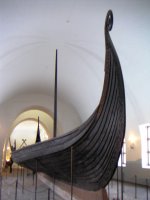
Our discipline slipped a bit today and we didn't make it out of the hotel till 11am. Today we planned to go to the Viking Ship Museum across the harbor. During the summer months there is a bus-like ferry that shuttles between the main quaiside area and the peninsula, but what with it being winter, we had to rely on a bus. The great thing about the public transport in Oslo was that the name of the next station was displayed on screens so you didn't have to read maps or try to decipher the bonkers pronunciations that came over the PA. A 15 minute ride later and we got off the bus with a load of other tourists at the museum. Strangely enough, no one else seemed to have the Oslo passes and several other Brits asked us about them in the queue.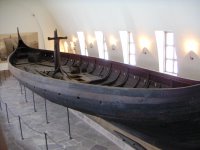
The museum contains the remains of three ships that had been uncovered in the Oslofjord. They had been used as burial ships so along with a corpses, everything they could possibly need for the afterlife was buried under the earth and so was preserved. Two of the ships are very well preserved, but the third one is pretty much just the keel and a few planks. The first boat on display is was just a "pleasure cruiser", but the second one was a more substantial vessel. Along with the boats, the contents of the tombs were displayed including a wagon and lots of smaller artifacts. The Vikings sailed along the shores by day and came ashore at night to feed and sleep - the design of the boats meant they could be beached very easily, allowing them to quickly overrun a town's defenses before the inhabitants could realise what was going on.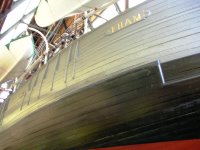
Leaving the museum we walked for 15 minutes down the road to a further two maritime museums. First up was the Fram Museum. The Fram is the strongest wooden ship ever built. Its design means that when surrounded by ice, it is pushed up rather than being crushed like conventional boats at the time. It carried Fridtjof Nansen on a planned five year expedition to the Arctic. It was known that there were currents flowing under the ice sheets, so the expedition set out to use these to drift further north than anyone had been before. 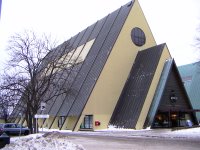
After 3 years adrift in the ice flows, Nansen and Hjalmar Johansen struck out on foot reaching 88o14' - the furthest north anyone had ever been. Their return journey brought them close encounters with polar bears until they met up with a British expedition. Later, the Fram was used by Roald Amundsen to carry his team to Antarctica for their successful South Pole expedition. The Fram remains the boat that has sailed the furthest north and south. To say it is big is an understatement. The museum had to be built around the ship. From keel to deck is 4 storeys and the masts many more. The museum allows us to enter this grand ship and lock around below deck - I certainly can't imagine spending several months on board, never mind several years lodged in Arctic Ice.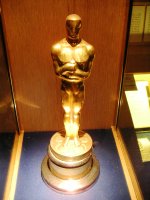
Next door to the Fram Museum is the Kon-Tiki Museum, finishing off our tour of boat-related sights. The Kon-Tiki is a raft made by Norwegian Thor Heyerdahl to prove that South Americans could have settled the pacific islands in Pre-Columbian times. His team traveled to Peru and constructed a raft out of balsawood and other natural materials and in 1947 successfully sailed from South America to several Pacific islands such as Easter Island. Although they took military rations with them, they lived off the sea. A documentary detailing the voyage won Heyerdahl the 1951 Oscar and this is on display. 
Given that replica Oscars are not allowed to be made, it was pretty special to be a few inches away from a genuine Oscar statue. In 1970, Heyerdahl set off on the Ra II to show that ancient Africans could have made the crossing to America. Ra II was constructed from papyrus and again successfully completed the crossing from Morocco to central America. 
A final vessel, the Tigris was built in the late 70s to show that Indians and Mesopotamians could have traded. However in protest at being denied passage by friendly countries the boat was burnt in protest. The museum contains the Ra II and a replica of the Kon-Tiki. We were pretty bemused to see a large moai sitting outside a Norwegian museum, but thankfully all was explained inside.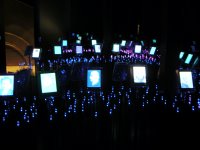
After this we bussed back into the centre to find the newly opened Nobel Peace Museum. Although the majority of Nobel Prizes are awarded in Stockholm, the Peace Prize is awarded annually in Oslo. The peace museum was opened last summer and contains very high tech displays. Upon entering we were greeted with a wall with many holes, each of which emitted voices in different languages giving messages of hope. After a while we decided we weren't going to find the English one and so moved on into the main museum. First up was the Triptych of Hope in which quotes from people such as Hitler, the Dali Lama right up to Homer Simpson. The aim is to depict conflicts in which the Peace Prize recipients have been involved. Moving upstairs we find the current exhibition, entitled Make power - not war. 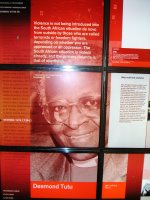
This is a display by the 2005 winner, the international Atomic Energy Agency, highlighting the history of nuclear development and the agencies attempts to stop the proliferation of weapons through the Nuclear Non-Proliferation Treaty and promote the use of nuclear power as an alternative to using fossil fuels. After this came the Nobel Field: a darkened room full of fibre optic reeds and small screens. Every recipient of the Nobel Peace Prize has their own screen. As you approach, motion sensors detect you and displays more details about the recipients work. At least that was the idea; some of the panels needed a little more coercing. Rather annoying after spending a long time trying to get the backgrounds of the recipients (which also weren't in chronological order) the next room featured large video screens where by moving a slider, you could select any recipient and find out more about them... Although the number of exhibits is relatively small, the quality of them made this a fantastic place to see. The exhibits are changed every few months as well so the museum is constantly changing.
Seeing as it was now quite late, we returned to the hotel picking up some lunch (another pølse from the newsstand across from the hotel) and chilled out before heading out for dinner. This time we decided to try to find some genuine Norwegiann dishes. We'd been warned that traditional food was pretty grim, but despite this and thanks to our Wikitravel guide we found a beer hall a few minutes walk from the hotel that served up genuine local food. Mine consisted of salted pork and beef - surprisingly good and very cheap (for Oslo) coming in at under £10 each. We headed back to the hotel and attacked the duty free vodka we had brought with us and made a further few late night trips to the new stand for further pølse and Matt discovered the joys of the cakes from the hotel shop. We had noticed that the bars don't close until late - 4am in some cases and it certainly seemed that the city went out and had it on Saturdays.
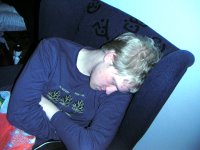

No comments:
Post a Comment